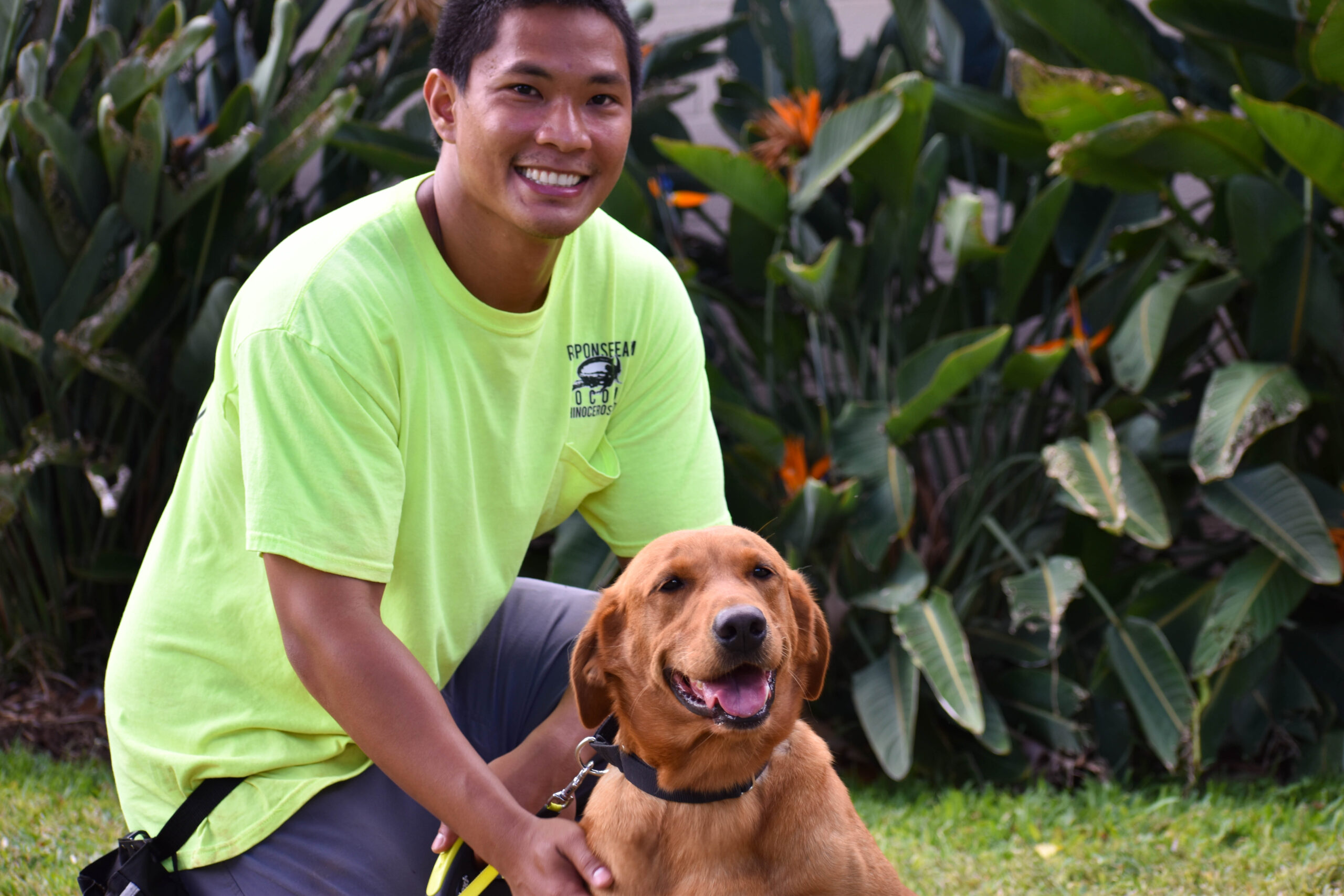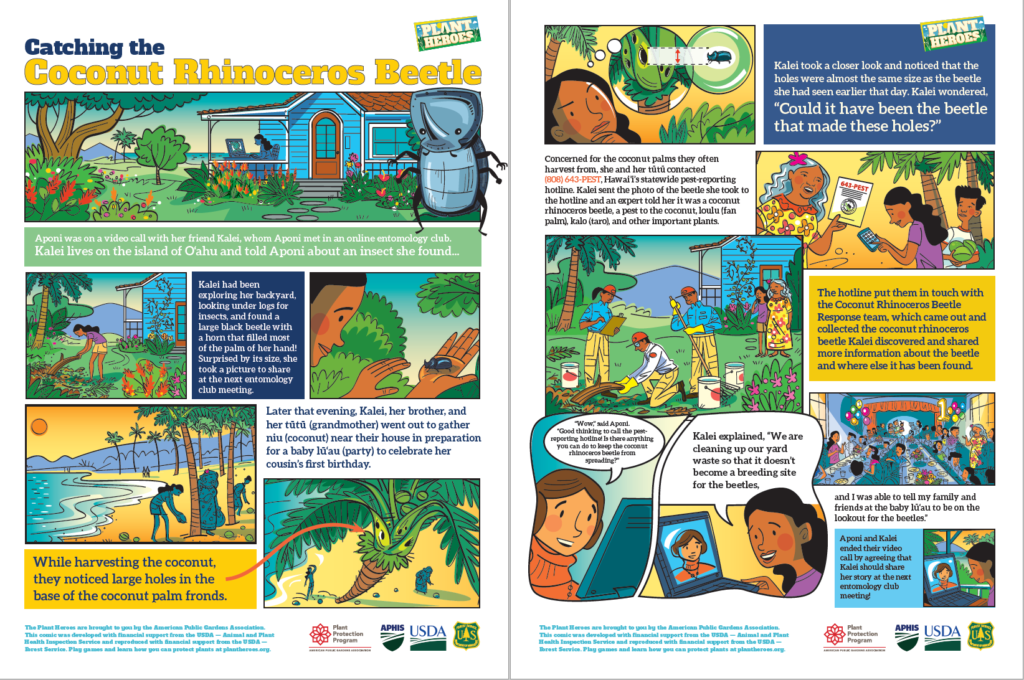
Did you know that dogs can be plant heroes too?
Dogs’ incredible sense of smell is 10,000 times better than ours, making them great at detecting all sorts of things, including explosives, diseases, and even insects that can be harmful to forests! (Watch this video to learn more about a dog’s incredible sense of smell.) Dogs have been used to help locate insects and fungi damaging trees and crops, including Mediterranean fruit flies, citrus canker disease, Asian longhorned beetles, and even coconut rhinoceros beetles. In Hawaii, the coconut rhinoceros beetle, a giant beetle with an impressive horn, can cause damage to palm trees that are important to the Hawaiian culture and ecosystem. We asked Cody, a Canine Handler for the Coconut Rhinoceros Beetle (CRB) Response, and Bravo (a four-legged plant hero) to tell us a little bit about how they detect these beetles.
What does a normal day for you and Bravo look like?
A typical day includes cleaning the kennels in the morning, then heading out onto location where we survey mulch piles in our search for coconut rhinoceros beetle (CRB) breeding sites. Later in the day Bravo will go on a walk for exercise and get some enrichment where he can relax and be a dog.
From how far away can Bravo detect a coconut rhinoceros beetle?
Depending on how strong the wind is blowing, Bravo can lead me toward the source of the target scent from 10 yards away when surveying an area.
How did Bravo become a beetle-sniffing canine?
Bravo was recruited by the USDA, where they look for various traits in a dog, such as attentiveness and food motivation. He was then taught to respond when a certain scent is present; in this case, he was trained on CRB larvae. He was then transported to Hawaii, where he acclimated to his new environment and refined his scent detection skills. My favorite memory of Bravo is when we were paired together as handler and canine. It was a new beginning of a team learning to work together.
Cody, how did you become a beetle-sniffing canine handler?
I became a canine handler because I wanted to have a career working alongside animals that also involved environmental conservation within my community. Becoming a canine handler for the CRB Response allowed me to do both. Becoming a canine handler is a lot of fun. It’s the perfect combination of problem-solving and the fact that everyday feels like bring-your-dog-to-work day. If you have a passion for animals and making the world a better place, this could be a great job for you!
Video Break
See Cody and Bravo in action in this video!
Do you face any challenges as a canine handler?
The most challenging part about being a canine handler for the CRB Response program is verifying our dog responses. Bravo may respond in one spot, but the bugs could be buried deep within mulch or under decomposing stumps that could be hard to access, or the wind could be blowing very hard, which could cause the scent to move in odd ways. I always need to keep in mind that even if we don’t find bugs where he responded, it doesn’t necessarily mean he’s incorrect.
What is your and Bravo’s proudest accomplishment?
My proudest accomplishment with Bravo is the bond we’ve built together as a team. We both are working hard to put each other in the best position to succeed.
What’s one lesson your job has taught you that you think everyone should learn at some point in their life?
Patience is key. Early on in our journey, Bravo and I had rough training days and new hurdles to overcome, and discovering new breeding sites didn’t appear as often. Nowadays, after gaining experience from all the mistakes and making incremental progress each week, we are finding more breeding sites and our confidence in the quality of our work has gone up.
To learn more about the important work that Cody and Bravo do as part of the CRB Response, click here. Did you know that the coconut rhinoceros beetle can grow up to 2.5 inches long? Using our field guide and activity books (beginner and advanced), learners can discover the coconut rhinoceros beetle life cycle, read about its favorite foods, and understand the impact on Hawaiian plants through activities, puzzles, and guided journaling. Also, be sure to check out our comic that follows Aponi’s friend Kalei as she makes a discovery in her backyard!
Written by: Suzanne Hartley
